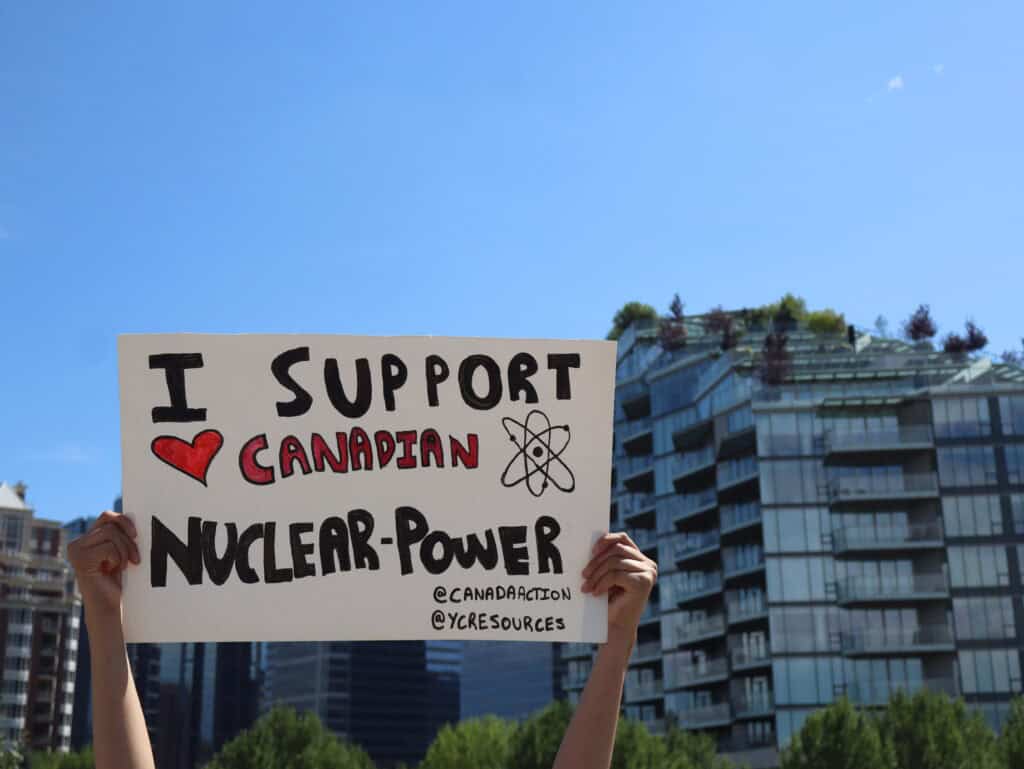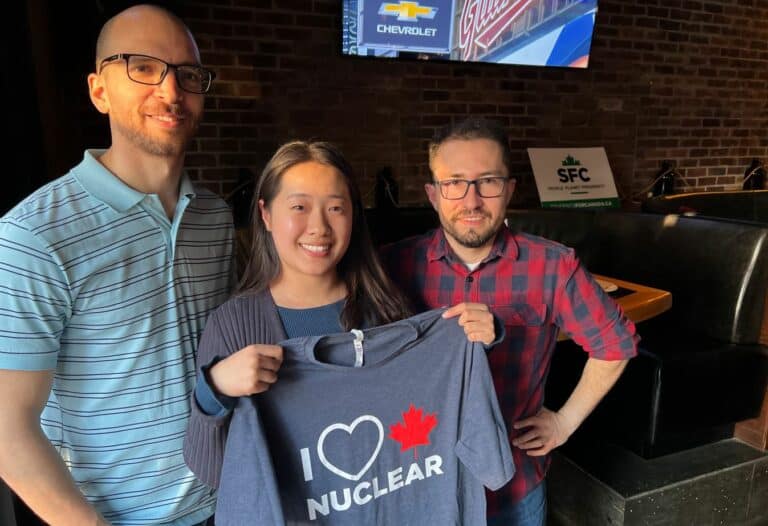
4 Things I Learned About Nuclear Energy as a High School Student
During high school, “nuclear” was just something we learned in science class. But when I was introduced to the nuclear energy sector, my world was opened up to the many

Canada ranks 6th globally in nuclear energy production, with nuclear supplying 13% of the nation’s electricity. In Ontario, that share jumps to 52%, making the province the focal point for the development of small modular reactors (SMRs).
This technology represents a rapidly growing sector that will create valuable employment opportunities for the next generation of Canadians.
SMRs are advanced nuclear fission reactors that usually have a maximum capacity of 300 MW. Essentially, SMRs are mini-generation systems that generate electricity by splitting atoms to release heat. This heat produces steam, which drives turbines to produce electricity.
These reactors are designed with passive safety features that require minimal human intervention during emergencies and have the potential to lower construction and operational costs compared to traditional reactors.
The Ontario Power Generation (OPG) is building four BWRX-300 SMR units at the Darlington New Nuclear Project site, in Bowmanville, located 70km east of Toronto These SMR units have the combined capacity to power 1.2 million homes, reflecting the commercial viability of these reactors and Canada’s unique and historical role in the peaceful use and production of nuclear energy.
The Darlington SMR fleet has promising economic potential that will accelerate Canada’s economic growth and expand Canada’s tax revenue.
Building and operating a fleet of these four SMRs will provide $15.3 billion to Canada’s GDP, generate $4.9 billion in tax revenues to municipal, provincial, and federal governments, and create and sustain 2,000 jobs annually over the next 65 years.
Many of these jobs will be in construction, engineering, project management, operations, and manufacturing.
The economic benefits for this fleet could also be expanded beyond Ontario for multiple use cases such as oil and gas extraction, data centres, and other artificial intelligence infrastructure. The growth of Canada’s nuclear supply chain could further amplify these economic benefits by opening new global export opportunities for Canadian nuclear technology.
Projects like the Darlington SMR fleet provide opportunities for Canada to improve its global economic competitiveness and independence, which is important now more than ever amidst the ongoing US-Canada tariff dispute.
The employment opportunities provided by the design, construction, operation, and maintenance of the Darlington SMR fleet will be promising to young Canadians. If projects like Darlington SMR fleet prove to be a success in delivering reliable electricity to Ontario homes, SMR development could be replicated throughout Canada and provide similar employment opportunities to young Canadians across the country.
Nuclear energy organizations value the potential that young Canadians can provide to Canada’s energy sector. This is reflected in partnerships between the Millwright Regional Council of Ontario and X-Energy Canada to increase awareness of the job and training opportunities the technology can create for youth interested in skilled trades.
Moreover, there are specific programs and action plans set in place where organizations such as the Organization of Canadian Nuclear Industries are providing support to help underemployed groups such as youth, immigrants, and Indigenous peoples gain access to employment in skilled trades through programs like Skilled Trades Employment Pathway (STEP) Program and the First Nation, Metis, Inuit (FNMI) Engagement Action Plan.
Momentum for SMRs will continue to grow as the nuclear energy sector taps into the potential of these flexible, scalable, and land-efficient reactors. If you’re a post-secondary student like me or a recent graduate looking for work, Ontario’s SMR innovation could lead to more modular nuclear energy projects across Canada, leading to more employment opportunities for young Canadians.
This is our chance to be part of a transformative energy shift that will strengthen Canada’s position as a global leader in energy development.
Sign up for updates about our work at YCR. Please sign up using a personal email and not a work or school email if possible.
"*" indicates required fields

During high school, “nuclear” was just something we learned in science class. But when I was introduced to the nuclear energy sector, my world was opened up to the many

Canada: the land of beavers, maple syrup, and superstar hockey players. The Great White North is known for many things. Nuclear power isn’t really one of them…

As the world grapples with the mounting effects of climate change, the need for sustainable and clean energy sources is more critical than ever.